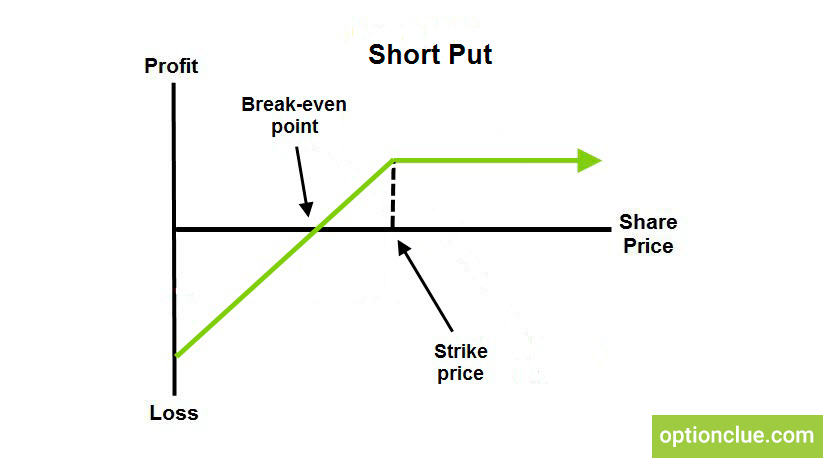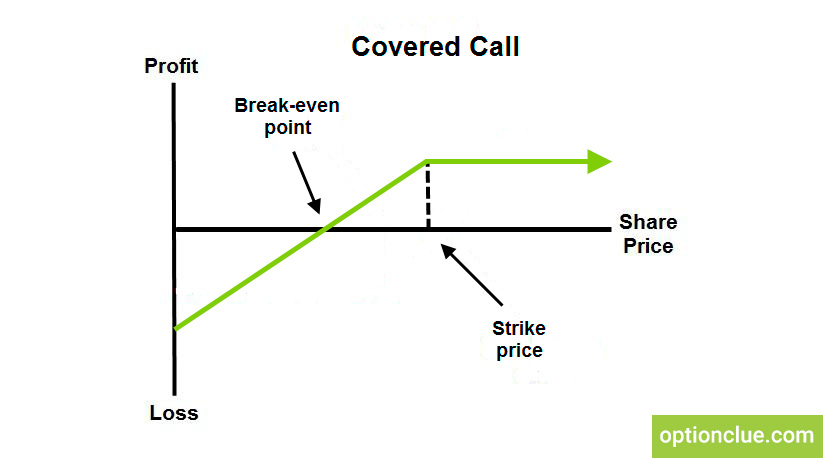Option Wheel Strategy or Covered Strangles

Contents
- The nature of the option wheel
- How to choose an asset to start the option wheel
- Step 1. Sell cash secured put
- Step 2. Continue selling puts until assigned
- Step 3. Selling covered calls
- Conclusions on options wheel strategy performance
The Nature of the Option Wheel
In this article we will discuss one of the most popular options strategies called the option wheel. Sometimes this strategy is also called cash-secured strangles, covered strangles or wheelbarrow. There are different names for that strategy, because recently, the options wheel strategy is gaining more and more popularity, and it deserves your attention. This is because that it generates stable cash flow when selling options and respectively collecting premiums and this money becomes immediately available for an option trader on his account. He can simply withdraw it or use it in making other trading decisions.
It is popular and quite effective because the trade with covered strangles rewards good money management and you may not care very much about being directionally correct. The strategy is somewhat bullish but you do not need to pick up the right direction. You just should be focusing more on management and think about things you may influence during your trading instead of trying to predict the market direction.
This strategy can be considered conservative and it can lead to reliable profits. You may use it for income or for growing your portfolio.
The option wheel strategy includes 3 consecutive steps:
- selling cash-secured puts (CSP)
- stock owning in case option is assigned
- selling covered calls (CC)
The main goal is to sell options without being assigned. If you succeed in this, you will be able to quickly wrap your funds and gain much. If not, it is not the problem, you just proceed to the next steps of the wheel strategy where you can also earn money. Let’s figure out all these steps.
How to Choose an Asset to Start the Option Wheel
This is the first and most important step that affects the effectiveness of running option wheels.
Below are the main criteria to choose options to trade:
- You should pick stocks you would not mind owning even if your short option is assigned and you have to go to the second step of the wheel options strategy.
- It can be a company with good profits and stable cash flow.
- You should be sure of sufficient liquidity to have the ability in managing and rolling your options position if necessary.
- Market condition of underlying: if the market tends to be near current price levels or to go up, the choice of such asset to sell options is a good deal.
- Taking into account that 1 option contract represents 100 shares, you should pay attention to the current stock price and funds in your account to afford the assignment and have the ability to make other trades without ruining risk and money management rules.
- When assigned, dividends paid may become an additional reason for choosing this company and dividend stocks are rather stable and predictable compared to other stocks.
- High implied volatility (IV) and the expectation of its further decline can be another edge when selling puts.
- Use options scanner or similar tools to simplify the process of identifying attractive opportunities for selling CSPs.
Step 1. Sell Cash secured put
As soon as we agree on the stock, we begin selling put options.

Basically, the best option series for wheel options strategy is 30 to 90 DTE (days till expiration) – in this case, theta will play on our side (especially 30 to 45 DTE implies an attractive premium since the time decay curve begins to speed up).
So, let’s take an example.
Suppose, ABC stock is trading at $50. We sell a cash-secured put (CSP) at $40 for $5 that expires in 90 days. As it was mentioned before, short put, in this case, requires cash to be maintained in our account so that we have enough funds to buy this stock if it is assigned. In our case, this amount is $4,000. The amount of the premium collected is $500 (100 shares * $5) for selling a put.
What will be our actions depending on the stock price at expiration?
Scenario 1. ABC stock price is $60 at expiration.
If the stock price exceeds the strike price of the put at expiration, it means that our put option expires worthless and all the premium earned ($500) is our profit, and we have no obligations to buy the underlying stock.
Step 2. Continue Selling Puts Until Assigned
If previously sold CSP expires worthless, it means we did a great job and earned the maximum – the whole premium amount. What are our next steps? We can simply go to step 1 and start a new cycle by selling another put option or choose something new to trade since our options scanner can generate new trading opportunities by this day.
According to the options wheel strategy, we should strive to sell the CSP options over and over to collect as much premium as possible without being assigned until we observe any crucial changes in the stock performance. When we mention this, we should move to another asset and analyze it.
But it is worth noting that put can be closed and reopened, or rolled, at 40-60% profit if there is much time left (less than 50% passed). This approach provides more profit potential in the long term.
Step 3. Selling Covered Calls
Suppose, the market started moving in an unfavorable direction for our options position. Let’s take the alternative scenario as an example.
Scenario 2. ABC stock price is $30 at expiration. It indicates the put option is in-the-money.
If within 90 days the stock price is below the strike price, it means that our put will be assigned. Therefore, we are obligated to buy ABC at $40 per share (despite the current market price is $30) paying for them with secured cash from our account. But we still have the premium of $500.
If for some reason we do not want to buy a share, we could close such obligation by buying the put option prior to expiration and before an assignment notice is received.
So, since we owe the stock, we proceed to the next step in running the options wheel strategy. Since our net stock cost ($40) is higher than the current market price ($30), we aim to lower the net stock cost below the levels where the stock is trading before it gets called away. This can be achieved by selling covered calls (CC) and receiving premiums for this.
A covered call involves selling a call option above the stock’s current price to collect the premium. One call option is equal to a hundred shares as usual.

Criteria to choose options to trade:
- Sell a call option above the net stock price whenever possible. It gives us a moderate premium and enables us to mitigate the risk of fast assignment and simultaneously we give extra time for the stock to start recovering.
- 30 to 90 DTE (30 to 45 is much more preferable) to use time decay in our favor as it was with puts.
- Looking for selling opportunities when IV is high.
- Possible closing and reopening new covered calls at 50% profits similar to put options.
We can continue the cycle of selling covered calls until the net stock cost is below the strike price at which point the stock can be left to be called away.
Conclusions on Options Wheel Strategy Performance
Sooner or later, all stages of the options wheel strategy will be completed. One day the call option will be exercised (when the share price exceeds the strike) and the share called away. Besides this, you can also just sell the stock at some moment and start a new cycle.
You will be impressed when summarizing the premiums earned from short puts and calls, and income after selling the stock for a profit (what is common for option wheels), you will find that this results in extra income. Besides this, If a company pays dividends when you own it, you can also profit from and get additional income.
So, the options wheel strategy has several advantages:
- It is often easier than classic trading (you do not have to be engaged in trading all the time).
- It provides a more stable source of income than classic trading.
- Not so big threshold to start running the strategy.
- It is suitable for different levels of risk.
